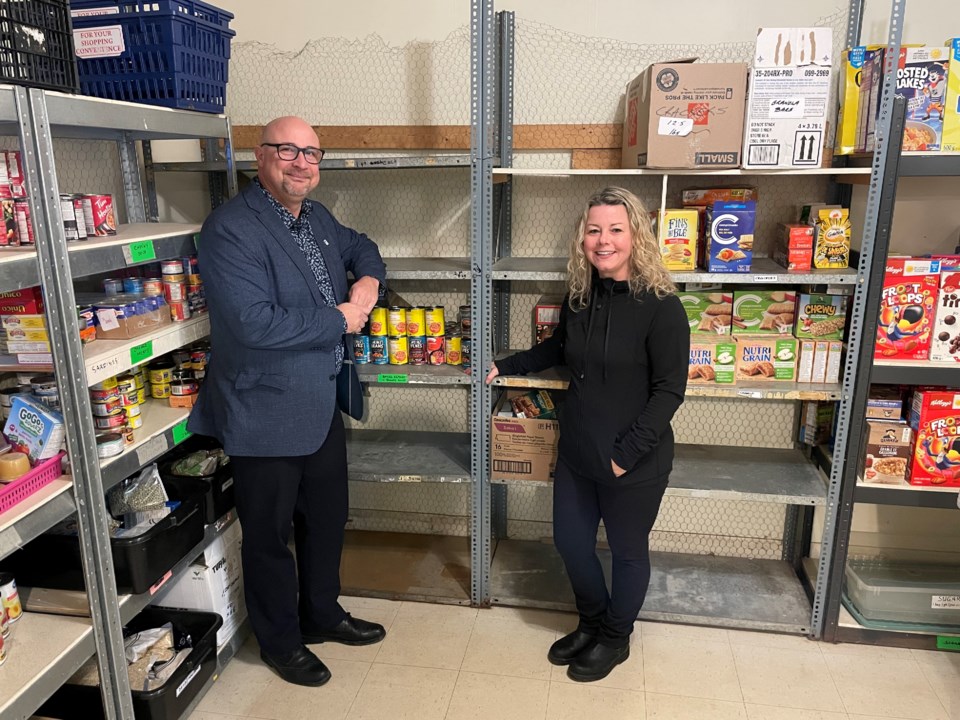As inflation and cost of living continue to hit Canadians hard, food insecurity is becoming a more widespread issue.
Per a a new report by Second Harvest, a food rescue charity, reliance on food banks is expected to increase by 60 per cent in 2023 after increasing by 134 per cent in 2022.
More than 1,300 organizations across Canada were surveyed at the end of 2022 about the extent of their charitable food programs and to uncover what they anticipate their needs to be in the future.
The survey found, 39 per cent say they’ll need 50 per cent or more perishable food next year to meet demand, while 44 per cent say they’ll need 50 per cent or more non-perishable food. 70 per cent say they’ll need more food and funding.
For the Helping Hand Food Bank in Bradford West Gwillimbury, when a fundraiser gets strong support or there’s a high amount of donations around the holidays, that doesn’t mean the food bank is in a comfortable place.
“We can’t just sit back and rest, we still have work to do,” said Carolyn Khan, Executive Director of the Helping Hand Food Bank. “January, February, and March are typically slow months for donations and we’re still going to have to be out there figuring out how to get food at a low cost or free option.”
Helping Hand has seen support from local grocery stores with food recovery programs and they get free meat, breads, and deserts, but it’s not the sole source of food.
“With the numbers increasing every shift that we’re open, we’re going to be reaching into our pockets very deeply in 2023,” said Khan. “If people want to help, whether it’s a food donation or a financial donation, we need both. The staples of what we need are the same as the staples in most homes—peanut butter, canned meat, canned tuna, canned soup, canned vegetables, cereal. We always need stale items.”
Seeing the increased number of clients utilizing the food bank and knowing inflation will only drive the cost of groceries up in 2023, it’s a concerning situation for Helping Hand and food banks across Canada.
“It’s very concerning for food banks, non-profits, and any community resource that is dependent upon donations,” explained Khan. “The magic wand would be to wave and have the government support us all, but that isn’t the case. Therefore, we’re very dependent on our community members, businesses, and local organizations to raise funds for us and hold food drives for us.”
The Innisfil Food Bank received strong support from the community over the holidays, but numbers of those struggling with food insecurity are increasing as well.
“The community response was fantastic. We received almost 40% of the year's food donations in the month of December,” said Donna Sawyer of the Innisfil Food Bank. “Our numbers are rising, so we are concluding that the need for support is rising as our members cite the cost of rent, food and gas."
Sawyer said the area has limited transit options, so it can be a challenge.
“We are seeing more seniors lately, although single parents and single-income families tend to experience the largest amount of food insecurity.”
Thanks to the strong support of community partners, the Innisfil Food Bank is in a good place right now, but can struggle during the slower periods of the year.
“Our community does need community support, but the Town of Innisfil and so many other organizations and business have partnered with us to stock our shelves,” said Sawyer. "We won't need to purchase food, other than jam and the higher ticket items, until mid-February.
Food insecurity is becoming a bigger issue in Innisfil and as more people reach out for support, Sawyer is hopeful they can be that steadying hand as bills add up for families in the area.
“If I had to create a goal it would be to simply get food into empty tummies,” said Sawyer. “We are grateful for everyone who has donated to our food bank to make sure the people we live next to can have access to provisions for themselves and their families."
